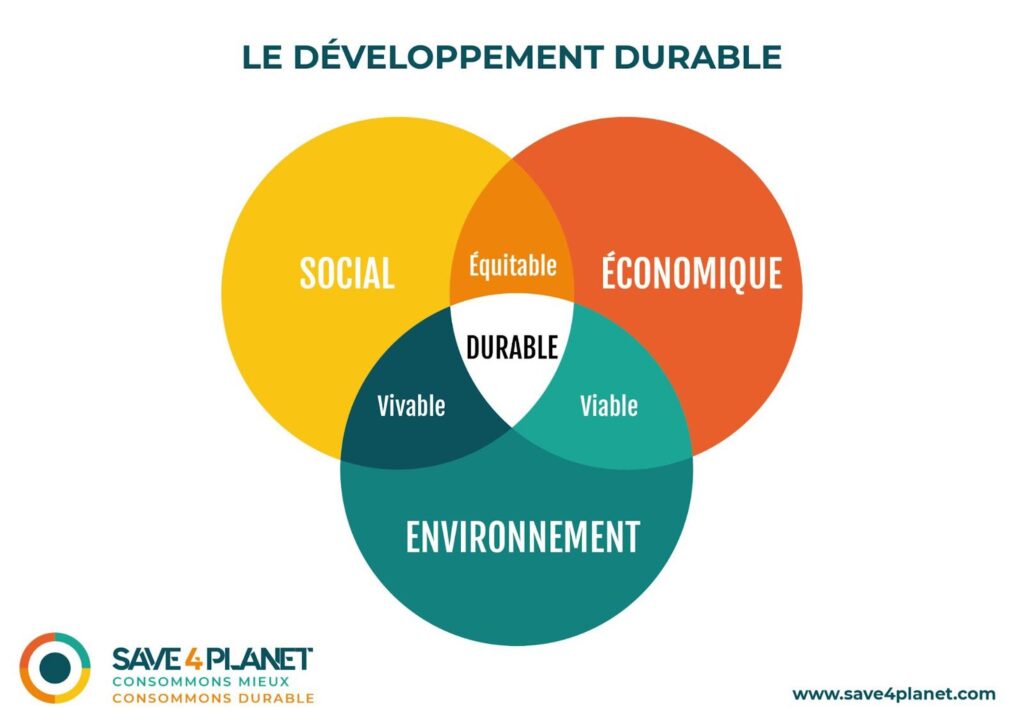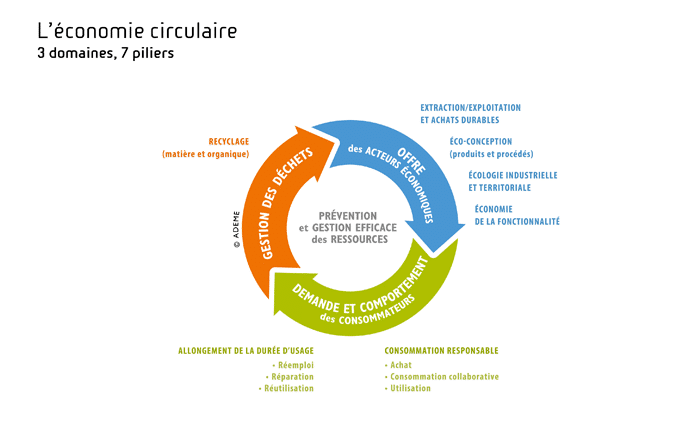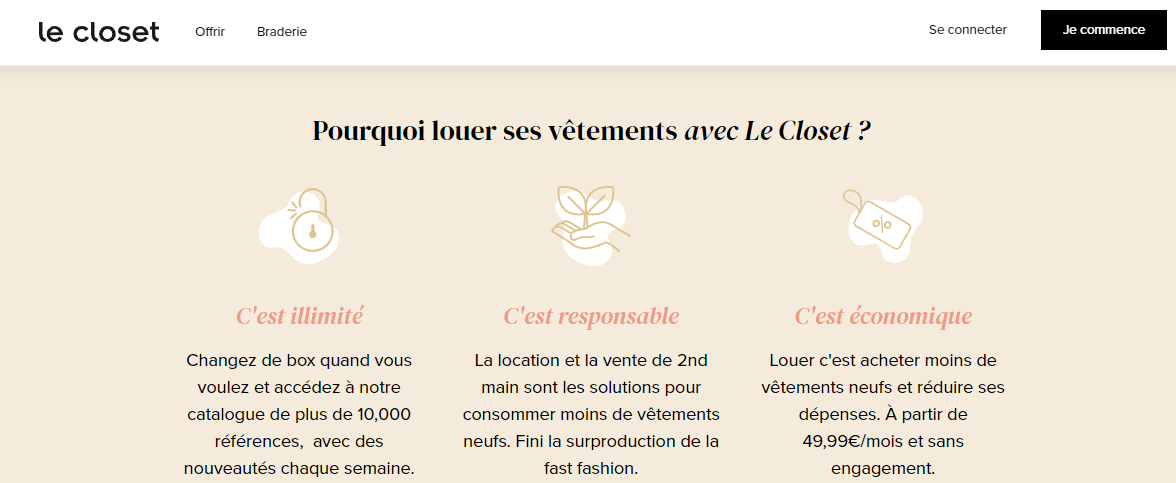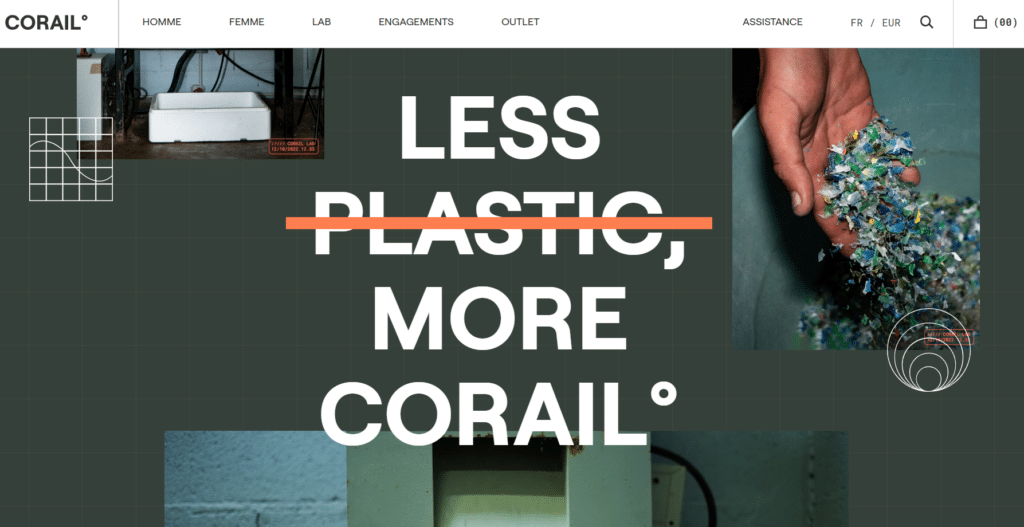Doing more and better with less: that's the absolute priority, given the climate emergency we're facing. The challenge for businesses is not only to adopt more responsible practices, but also and above all to devise more virtuous models to move towards sustainable consumption patterns. In other words, moving from a linear economy to a circular economy. So how do you incorporate the circular economy into your marketing strategy? Clarisse Popower, an expert in responsible digital marketing, explains.

Companies are faced with consumers who are increasingly aware of the environmental and social impact of the products and services they consume. These "consumers" want to take action and expect companies to communicate more about their commitments. The report by Invibes, a technology platform specialising in in-feed integration, bears witness to this. 78 % of the panel questioned think that brands should encourage consumers to turn more towards sustainable consumption.
The circular economy, sustainable development and marketing strategy: what are the issues?
The challenge for a company is to reconsider its business model and marketing strategy under a new prism to try to change the lines towards a more virtuous economy. Hence the need to initiate a CSR approach (corporate social responsibility) based on the pillars of sustainable development (People, Planet, Profit).

Companies have a role We have a considerable role to play in contributing to the development of a society that meets the needs of the present without compromising the ability of future generations to meet their own needs. Doing more and better with less is ultimately the way for companies to adopt a sustainable development approach. moving from a linear to a circular economy. This is also the objective of the anti-waste law for a circular economy (AGEC).
L'circular economy consists of producing goods and services in a sustainable way by limiting the consumption and wastage of resources and the production of waste. The aim is to move from a throwaway society to a more circular economic model. The French Environment and Energy Management Agency (ADEME) defines the circular economy as a paradigm shift away from the so-called linear economy. It limits the waste of resources and environmental impact by increasing efficiency at all stages of the product economy. In practical terms, the circular economy aims to counter the linear model of produce, consume and throw away.

How can we do more and better with less?
We need to rethink our value proposition in order to move towards a more viable model, based on more sustainable consumption patterns. More and more companies are exploring new business models based on the principles of responsible production and consumption. So we need to find our own model. Or take inspiration from more sustainable business models or marketing strategies inspired by the circular economy:
- La permabusiness is a development model that aims to create value by respecting three ethical principles inspired by permaculture. These are caring for people, preserving the planet, setting limits and sharing wealth.
- L'functionality economy favours a collaborative economy, shifting the emphasis from possession to use. For example, LeCloset lets people hire clothes. The getaround application allows individuals to hire other people's cars.

- La rational consumption involves taking environmental and social impacts into account when making purchasing decisions. For example: Loom offers durable clothing that lasts longer and causes less damage to the environment. The brand has chosen to communicate in a way that "does not encourage consumption", so as not to encourage over-consumption. Too good to go offers users the chance to consume differently by recovering unsold goods from retailers at low prices!
- Lindustrial and territorial ecology The aim here is to exploit synergies at a local level. Still in the textile industry: Sème offers sustainable clothing, made entirely in France (from weaving to manufacture) and at a fair price.
- Lsustainable procurement This means, for example, prioritising responsible purchasing and local sourcing. Upé offers clothing designed, knitted, made and packaged in France.
- L'eco-design This means limiting the environmental impact of a product from design to end-of-life, limiting waste and promoting recycling. Corail uses and recycles marine waste to produce high-quality trainers.

- Le reuse and recycling The principle is to give a second life to products or services through reuse and repair, and to process the waste collected. For example, Lady Cocotte offers second-hand toys in natural, recyclable, biodegradable and recycled containers.
Towards sustainable innovation marketing
The first step in a sustainable innovation approach is a strategic one. It consists of choosing the nature of its social commitment with a credible and relevant rationale. We then integrate these commitments into each of the 4Ps of marketing (Product, Price, Place, Promotion):
- PRODUCT The product or service offering needs to be transformed. This involves integrating the principles of sustainability. The solution may be to eco-socio-design your offering.
- PRICE The next step is to define a fair pricing policy that incorporates the principles of equity.
Patagonia guarantees all its products, making sustainability a priority (by consuming less energy, wasting less water and creating less waste).
- DISTRIBUTION We need to define a sustainable distribution strategy between production and consumption. Examples include the functionality economy and second-hand consumption.
OMAJ offers a first-rate selection of second-hand items.
- COMMUNICATION Define an editorial line in line with your values and your business. Communicate transparently, avoiding greenwashing and promoting responsible behaviour.
Patagonia is encouraging people to buy second-hand and repair their equipment thanks to Worn Wear, a communication campaign that promotes responsible behaviour.
The key point is that through these more virtuous models, companies are developing new prospects for innovation. They integrate environmental and social issues into marketing. Thanks to the circular economy, sustainable innovation makes it possible to create marketing with a triple impact for the company, the consumer and society at all levels. So it's essential to get training in all these different issues!





